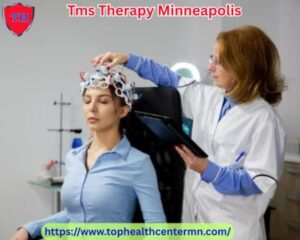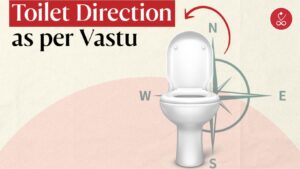
Tennis elbow, medically known as lateral epicondylitis, is a common overuse injury characterized by pain and tenderness on the outer part of the elbow. It often affects athletes, particularly tennis players, but can also occur in individuals engaged in repetitive arm movements in daily life or work activities. Managing this condition effectively is crucial to restoring function and reducing discomfort. Among various treatment options, PRP Treatment in Abu Dhabi has gained significant attention for its regenerative potential. But is PRP treatment truly effective for tennis elbow? Let’s explore this question in detail.
Understanding Tennis Elbow and Its Impact
What is Tennis Elbow?
Tennis elbow is an inflammatory condition affecting the tendons that attach the forearm muscles to the outer elbow. It typically results from repetitive motions that cause tiny tears in the tendon tissue, leading to pain, weakness, and reduced ability to perform daily activities.
Symptoms and Diagnosis
Common symptoms include pain on the outer elbow, weakness in the forearm, and difficulty gripping objects. Diagnosis involves a clinical examination and understanding of the patient’s activity history, which helps tailor an appropriate treatment plan.
The Limitations of Conventional Treatments
Traditional management includes rest, physical therapy, anti-inflammatory medications, and corticosteroid injections. While these approaches can provide relief, they often do not address the underlying tissue degeneration, leading to recurrence or prolonged recovery.
The Rise of Regenerative Medicine in Treating Tennis Elbow
What is PRP Therapy?
Platelet-Rich Plasma (PRP) therapy involves extracting a small amount of the patient’s blood, processing it to concentrate platelets, and injecting this platelet-rich plasma into the affected area. Platelets contain growth factors that facilitate tissue repair and regeneration.
Why Choose PRP for Tennis Elbow?
PRP harnesses the body’s natural healing processes, making it an attractive option for tendinopathies like tennis elbow. It aims to promote tissue healing, reduce inflammation, and restore function more effectively than some conventional treatments.
Effectiveness of PRP Treatment for Tennis Elbow
Scientific Evidence Supporting PRP
Numerous clinical studies suggest that PRP can significantly improve symptoms of tennis elbow, especially in cases resistant to conservative therapies. The growth factors released by platelets stimulate tendon cell proliferation, collagen synthesis, and neovascularization, leading to tissue repair.
Benefits Over Traditional Treatments
Compared to corticosteroid injections, which may provide quick relief but risk tissue degeneration over time, PRP offers a regenerative approach that targets the root cause of the condition. It is associated with longer-lasting improvements and reduced recurrence rates.
Patient Outcomes and Recovery
Patients often report reduced pain, increased strength, and improved function following PRP therapy. The procedure is minimally invasive, involves minimal downtime, and can be repeated if necessary to achieve optimal results.
Limitations and Considerations
While PRP shows promising results, it is not universally effective for all patients. Factors such as the severity of the condition, individual healing capacity, and adherence to post-treatment protocols can influence outcomes. Consulting with a qualified healthcare provider is essential to determine suitability.
The Procedure and What to Expect
Preparing for PRP Treatment
Preparation involves blood collection and processing to obtain platelet-rich plasma. The entire process is quick, typically completed within an hour, and is performed under sterile conditions.
The Injection Process
Using local anesthesia for comfort, the practitioner injects the prepared PRP into the affected tendinous tissue. The procedure is generally well-tolerated, with patients experiencing minimal discomfort.
Post-Treatment Care
Post-procedure, patients may experience mild swelling or soreness. A tailored rehabilitation program, including physical therapy exercises, enhances healing and functional recovery.
Why Consider PRP Treatment in Abu Dhabi?
Advanced Regenerative Facilities
Abu Dhabi offers state-of-the-art medical facilities equipped with the latest regenerative medicine technologies, ensuring high-quality PRP therapy.
Expert Medical Teams
Access to experienced specialists trained in regenerative treatments provides confidence in achieving effective outcomes.
Personalized Treatment Plans
Clinicians in Abu Dhabi tailor treatments to individual needs, optimizing the potential benefits of PRP therapy for tennis elbow.
Conclusion: Is PRP Treatment a Viable Option?
PRP Treatment Abu Dhabi presents a promising regenerative approach for managing tennis elbow, especially in cases unresponsive to conventional therapies. By stimulating the body’s natural healing mechanisms, PRP can reduce pain, improve function, and potentially offer longer-lasting relief. However, individual factors play a significant role in treatment success, making consultation with qualified healthcare professionals essential to determine the most appropriate approach.
FAQs
1. How long does it take to see results after PRP treatment for tennis elbow?
Results can vary, but many patients begin to notice improvements within a few weeks post-treatment, with optimal results typically seen after a series of sessions and during the subsequent months.
2. Is PRP treatment suitable for everyone with tennis elbow?
While PRP is effective for many, its suitability depends on individual health status and the severity of the condition. Consulting a healthcare provider is necessary to assess candidacy.
3. How many PRP treatments are usually needed for tennis elbow?
Most patients benefit from one to three sessions, spaced several weeks apart. The exact number depends on the response to initial treatments and the severity of the condition.
4. Can PRP treatment be combined with other therapies?
Yes, PRP can be integrated with physical therapy, ergonomic adjustments, and other conservative measures to enhance recovery and functional outcomes.







